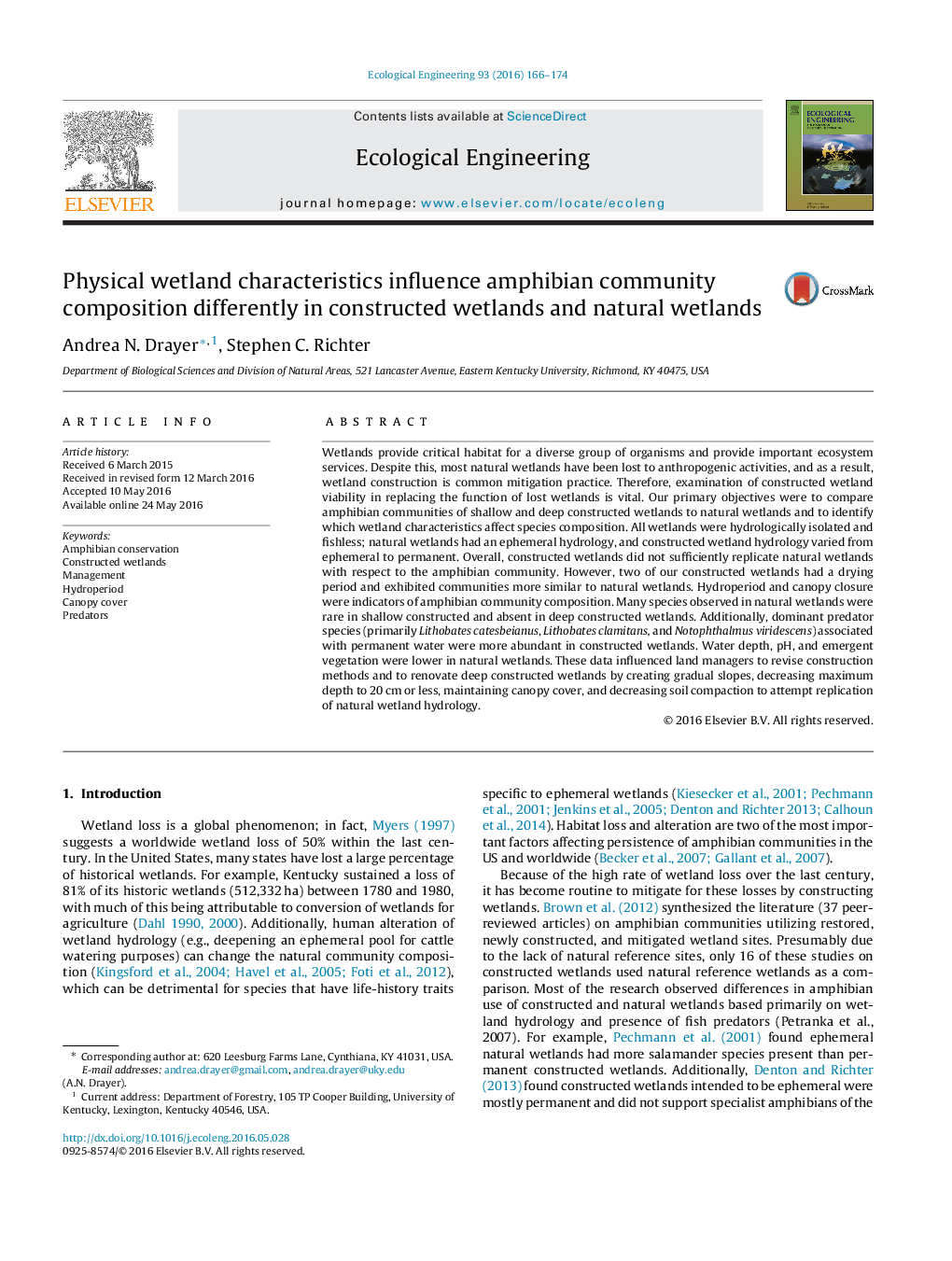| Article ID | Journal | Published Year | Pages | File Type |
|---|---|---|---|---|
| 4388726 | Ecological Engineering | 2016 | 9 Pages |
•Amphibian community composition and hydroperiod are different between natural and constructed wetlands.•Permanent constructed wetlands are source habitat for dominant amphibian predators.•Wetland depth, vegetation structure, and pH shape amphibian communities.
Wetlands provide critical habitat for a diverse group of organisms and provide important ecosystem services. Despite this, most natural wetlands have been lost to anthropogenic activities, and as a result, wetland construction is common mitigation practice. Therefore, examination of constructed wetland viability in replacing the function of lost wetlands is vital. Our primary objectives were to compare amphibian communities of shallow and deep constructed wetlands to natural wetlands and to identify which wetland characteristics affect species composition. All wetlands were hydrologically isolated and fishless; natural wetlands had an ephemeral hydrology, and constructed wetland hydrology varied from ephemeral to permanent. Overall, constructed wetlands did not sufficiently replicate natural wetlands with respect to the amphibian community. However, two of our constructed wetlands had a drying period and exhibited communities more similar to natural wetlands. Hydroperiod and canopy closure were indicators of amphibian community composition. Many species observed in natural wetlands were rare in shallow constructed and absent in deep constructed wetlands. Additionally, dominant predator species (primarily Lithobates catesbeianus, Lithobates clamitans, and Notophthalmus viridescens) associated with permanent water were more abundant in constructed wetlands. Water depth, pH, and emergent vegetation were lower in natural wetlands. These data influenced land managers to revise construction methods and to renovate deep constructed wetlands by creating gradual slopes, decreasing maximum depth to 20 cm or less, maintaining canopy cover, and decreasing soil compaction to attempt replication of natural wetland hydrology.
